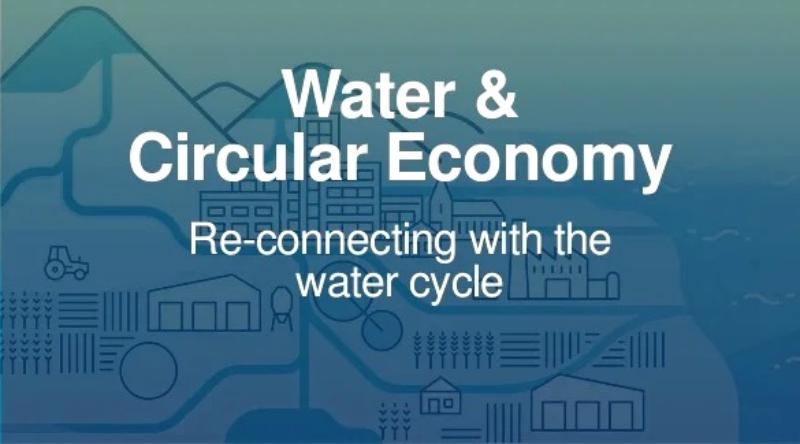
Water is indeed crucial for both life and the economy. Its importance cannot be overstated, as it serves as a fundamental resource for human existence and economic activities. Water plays a crucial role in the circular economy, which aims to create a sustainable and regenerative system by minimizing waste, maximizing resource efficiency, and promoting reuse and recycling.
It is ironic that planet earth is covered more than 70% with water, but the inhabitants are struggling to meet their water needs. The reasons are obvious. Out of the Earth’s total water, less than 3% is available as freshwater and only a portion of it is actually accessible. Uneven distribution of fresh water and population across the globe further skew water supply and demand ratios. Also, climate change, deforestation, desertification, droughts, floods, and depletion of natural water bodies resulting from anthropogenic and natural activities add to these miseries.
In the context of the circular economy, water management focuses on reducing water consumption, optimizing water use, and ensuring the reuse and recycling of water resources. Here are some key aspects of water in the circular economy:
Water Conservation: The circular economy promotes the efficient use of water resources by reducing water consumption and minimizing waste. This involves implementing water-efficient technologies and practices in industries, agriculture, municipal and households’ level. Examples include using low-flow fixtures, efficient irrigation techniques, and water recycling systems.
Water Reuse and Recycling: Instead of treating water as a single-use resource, the circular economy emphasizes the reuse and recycling of water. This can involve treating and purifying wastewater for various purposes such as irrigation, industrial processes, and even potable water production. Advanced water treatment technologies like reverse osmosis, membrane filtration, and disinfection methods enable the safe reuse of water.
Integrated Water Management: The circular economy approach recognizes the interconnectedness of different sectors and their water needs. Integrated water management involves coordinating water use across sectors like agriculture, industry, and municipalities to optimize water allocation and minimize waste. It promotes water-sharing agreements, decentralized water treatment systems, and innovative approaches like water-sensitive urban design.
Nutrient Recovery from Wastewater: Wastewater contains valuable nutrients like nitrogen and phosphorus. In the circular economy, these nutrients can be recovered from wastewater through processes like anaerobic digestion, struvite precipitation, and algae cultivation. The recovered nutrients can be used as fertilizers in agriculture, closing the nutrient loop and reducing reliance on synthetic fertilizers.
Water-Energy Nexus: Water and energy are closely interconnected, and the circular economy recognizes the importance of their efficient use. Technologies like cogeneration, which combines heat and power generation, can improve energy efficiency in water treatment processes. Additionally, renewable energy sources can be integrated into water treatment facilities to reduce the environmental impact.
Innovation and Collaboration: The circular economy approach to water management encourages innovation and collaboration among various stakeholders. This involves partnerships between businesses, government agencies, research institutions, and communities to develop and implement sustainable water management practices. It also promotes the adoption of digital technologies and data-driven approaches for efficient water monitoring and management.
By adopting a circular economy approach to water management, we can minimize water scarcity, reduce pollution, and create a more sustainable and resilient water system. It requires a shift in mindset and the implementation of innovative technologies and practices to ensure the efficient and responsible use of water resources.
Overall, circular economy schemes can trade water, related products, and services in closed cycles to increase their life and achieve highest value. Such initiatives can stop waste, emissions, and leakages from leaving the water system’s closed loop as all streams are considered as resources. The water circular economy can eliminate end-of-life concepts, attain higher resource usage, add value to the existing water practices, and create long-term solutions.